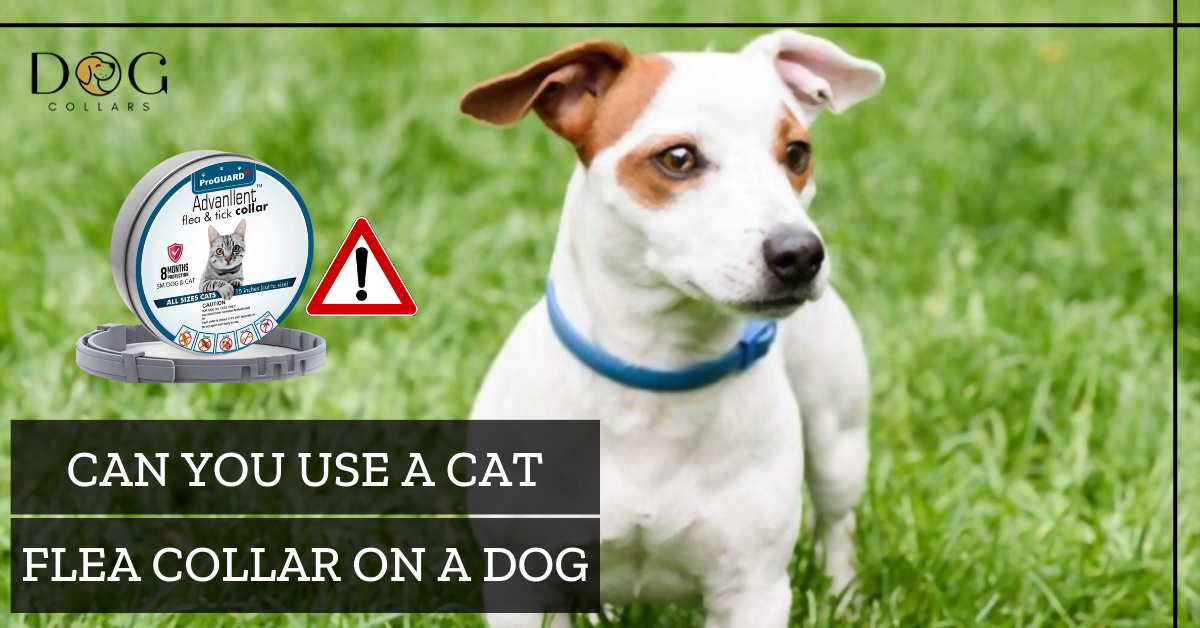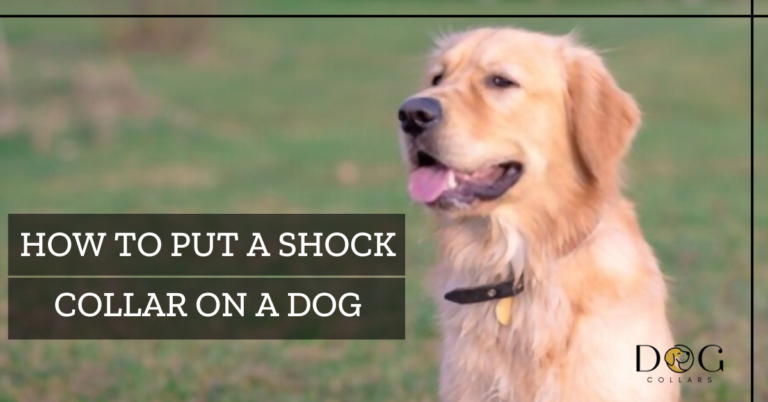Can You Use A Cat Flea Collar On A Dog – 5 Ultimate Reasons

Looking for a cheap and easy solution to keep your dog free from fleas? You might be wondering, can you use a cat flea collar on a dog? While it might seem like a cost-saving measure, utilizing a cat flea collar on your dog could end up costing you more in vet bills down the line.
While it is technically possible to use a cat flea band on a dog, it is not recommended. Cat pest collars contain different active ingredients and are designed for the feline body. Which may not be suitable or effective for dogs.
Additionally, flea collars designed for cats may not fit properly on dogs and can pose safety risks if ingested. It is always best to choose a pest control product specifically designed for dogs.
We explore the potential risks and drawbacks of utilizing a cat pest collar for dogs and offer some advice on safer alternatives. Read on to learn more.
5 Reasons Why You Shouldn’t Use Cat Flea and Tick Products on Dogs
Hey there! If you’re thinking about using a cat tick collar on your dog, it’s important to be aware of the potential risks and drawbacks involved. Let me give you some reasons why applying a cat parasite strap on your dog might not be the best idea:
1. Different Active Ingredients:
Did you know that using a flea collar designed for cats on your furry friend can be super harmful? The active ingredients in these collars are made for feline bodies and can cause skin irritation, redness, and rashes in dogs. So, always make sure to use a flea collar that’s specifically made for dogs, to keep your pup happy and healthy!
2. Ineffective Against Dog Fleas:
Hey, fellow dog owners! Just wanted to give you a heads-up about something really important. Did you know that dog fleas are different from cat parasites? Yup, they’re totally different species and need different treatments. So, applying a cat pest collar on your dog might not work against dog fleas and can give a false sense of security.
This can leave your furry friend open to flea infestations, and nobody wants that! So always apply a flea treatment that’s specifically made for dogs, to keep those pesky fleas away for good.
3. Size and Fit:
Did you know that flea collars made for cats are smaller and narrower than those made for dogs? using a cat insect band on your furry friend might not give them the right protection or might not fit properly, making it more likely to fall off or get stuck on something.
So, always make sure to utilize a flea collar that’s specifically made for dogs, to keep your pup safe and comfy!
4. Safety Concerns:
Do you know how dogs love to chew on everything? Well, that includes flea collars too! And here’s the thing – flea collars made for cats can contain chemicals that are safe for our cat friends but can be toxic to dogs if swallowed. This can cause some serious health issues like itching, swelling, breathing difficulties, and in extreme cases, even death. So, always use a flea collar that’s made specifically for dogs and keep your furry friend safe from harm.
5. Better Alternatives:
Hey, fellow dog lovers! Want to keep your furry pal safe and flea-free? Well, there are lots of amazing flea control products out there that are made just for dogs! These products are carefully formulated with the right ingredients and doses to keep your pup healthy and happy. So, always choose a flea control product that’s designed for your dog’s specific needs and size. It’s the best way to ensure that your pooch stays protected and flea-free!
In conclusion, while it may be tempting to wear a cat collar on your dog as a cost-saving measure, it’s not worth the potential risks and drawbacks. It’s important to choose a flea control product that is specifically designed for your dog’s species and size to ensure its safety and effectiveness.
Is using a cat flea collar on a dog economical?
Using a cat parasite collar on a dog may seem like an economical solution to keep fleas away, but it can be a risky decision. Cat tick collars contain chemicals that are safe for felines but could be harmful to canines.
Additionally, cat pest collars are not designed for the weight and size of a dog’s neck. Which makes them less effective for flea protection. It is highly recommended to use a dedicated flea product designed for dogs, which not only provides the right level of protection but is also safe for them.
The best approach is to consult a veterinarian who can guide you in selecting the appropriate flea treatment for your dogs’ needs. This may seem more expensive initially, but it can save you a lot of money in the long run, as the wrong flea product can lead to major health problems for your pets.
What to Look for When Choosing a Dog Flea Collar
When choosing a dog flea collar, there are several factors to consider to ensure that you are getting the best one for your pet.
- Choose a collar that is suitable for your dog’s size and weight
- Check the active ingredient and ensure it is safe and effective for dogs
- Read and follow instructions carefully to avoid adverse reactions
- Consider the duration of protection offered by the collar
- Ensure the collar is water-resistant if your dog likes to swim or lives in a damp environment
What is the difference between a cat and dog flea collar?
The main difference between a cat and dog flea collar is the active ingredient used to kill fleas and ticks. Seresto flea collars are designed to target specific pests found on dogs or cats. Although both collars may seem similar, it is important to note that flea collars designed for dogs are not always safe for cats, as they may contain chemicals that are toxic to felines.
Therefore, it is crucial to choose the appropriate flea collar for your pet. Seresto flea collars, for example, are safe for cats and dogs and offer long-lasting protection against fleas and ticks. It is always recommendable to consult with your veterinarian before choosing a flea collar and to follow the instructions carefully to ensure its effectiveness and safety for your pet.
Negative Sides of Using Cat Flea Collars
While cat tick collars may seem like a convenient option for controlling fleas on cats, they also come with a range of potential drawbacks.
- Cat flea collars have limited effectiveness.
- Chemicals used in flea collars can be harmful to cats.
- Flea collars may not protect your cat from other parasites.
- Additional treatments may be required to safeguard your cat’s health.
- Flea collars can cause skin irritations, seizures, and even death in some cases.
- Consider negative environmental, health, and safety outcomes before using cat pest collars.
Conclusions:
In conclusion, it is not recommended to use a cat flea collar on a dog. To ensure maximum safety and effectiveness, it is important to choose a flea control product that is appropriate for the specific species and size of your pet, since dogs and cats have different body sizes and metabolisms. Using a flea collar designed for cats on a dog may not provide sufficient protection or could even pose a risk to the dog’s health due to variations in active ingredients and dosages.
FAQs:
Can a small dog wear a cat Seresto collar?
Yes, a small dog can wear a cat Seresto collar for flea and tick prevention. The Seresto collar is designed to fit cats and dogs of various sizes, and the active ingredients are safe for both species. However, it’s essential to choose the appropriate collar size for the dog to ensure it’s not too loose or too tight. Therefore, it’s advisable to measure the dog’s neck size. Overall, using a Seresto collar on a small dog can be an effective way to control pests.
Are Cat Flea Collars Safe for Dogs?
Cat flea collars are specifically designed for cats and contain ingredients that are safe for felines, but they may not be safe for dogs. The primary ingredient in cat flea collars is usually an insecticide called pyrethrin or permethrin. Which works by killing fleas on contact. While these ingredients are safe for cats in low doses. They can be toxic to dogs if ingested or absorbed through the skin.
What kills fleas instantly on a dog?
There are several products available that can kill fleas instantly on a dog. One of the most popular options is an insecticide shampoo designed specifically for dogs. These shampoos contain chemicals that are toxic to fleas upon contact, which means they can kill the pests immediately when used correctly.
Another option is a flea and tick spray, which can be applied directly to a dog’s coat and kill fleas on contact. Some flea and tick medications, such as spot-on treatments, can also kill fleas quickly.
How long do flea collars take to work?
Different flea collars have varying effectiveness periods, usually ranging from a few days to several months. It takes about two weeks for flea collars to take effect. Be patient as the process of getting rid of fleas is gradual. The collar’s insecticide needs time to spread over the fur and kill the fleas, larvae, and eggs. During the first few days, you may still see some fleas on your pet, which is normal. Follow the collar’s instructions and dosages to prevent any adverse reactions.
What’s the safest flea treatment for dogs?
For safe flea treatment options for dogs, natural remedies like essential oils or herbal shampoos are gentle and free of harmful chemicals. Oral treatments such as tablets are effective but consult your vet first. Spot-on treatments are popular but choose trusted brands and read the label carefully. Remember, safety is essential, so always consult your vet for a recommendation that is safe and effective.





